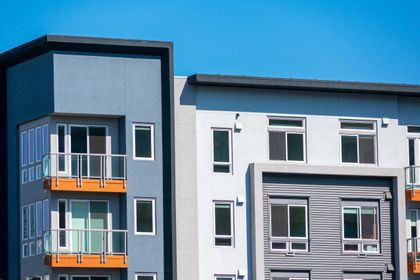What is a 1031 Exchange?
A 1031 Exchange is a common tax strategy that allows real estate investors to defer capital gains tax by reinvesting their equity from the sale of one investment property to the purchase of another.
Types of 1031 Exchanges
Simultaneous Exchange: The relinquished property and the replacement property close on the same day.
Delayed Exchange: This is the most common type of exchange in real estate investing today. A delayed exchange happens when the relinquished property is sold before the replacement is purchased. There is a specific timeline that governs this type of exchange, and it requires an intermediary to manage proceeds from the sale during that time.
Reverse Exchange: A reverse exchange is the opposite of a delayed exchange in that the replacement property is purchased prior to the sale of the relinquished property. This type of exchange should be used under the right circumstances as the risk for the investor is high. The same timeline that governs a delayed exchange also applies to a reverse exchange.
Build-to-Suit (or Construction) Exchange: A construction exchange allows for improvements to be made on the replacement property by using tax-deferred dollars to make updates while held by a qualified intermediary throughout the duration of the 180 day exchange period.
1031 Exchange Rules
For the purposes of this article, we’ll be referring to the most common type of 1031 Exchange strategy, a delayed exchange.
There are three primary rules that govern a 1031 Delayed Exchange.
- The replacement is of equal or greater value than the sale property
- The replacement must be identified within 45 days
- The replacement must be purchased within 180 days
Replacement Property Valuation
In a like-kind property exchange, the replacement property needs to be of equal or greater value than the sale of the relinquished property. Any difference in value is called the boot or boot cash.
If the proceeds from the relinquished property exceed the value of the replacement property, the difference in value – the boot – is taxable.
45 Day Rule
The 45 day rule refers to the amount of time, starting from the day the original property is sold, that the investor has to designate a replacement property.
The intermediary receives the proceeds once the property is sold which are then held in escrow until the purchase of the replacement. A 1031 Exchange is void if the investor receives the proceeds.
In accordance with Section 1031(K), investors have three options when it comes to designating more than one replacement property.
- Designate up to three properties without regard to the fair market values of the properties (the “3-property rule”)
- Designate any number of properties as long as their aggregate fair market value does not exceed 200% of the aggregate fair market value of all the relinquished property(ies) (the ‘‘200% rule’’)
- Designate an unlimited number of potential replacement properties, without regard for valuation, provided they actually acquire 95% of the aggregate identified value within the exchange period (the “95% rule”)
180 Day Rule
The 180 day rule is the amount of time the investor has to close the replacement property(ies). The 180 days starts on the day the relinquished property is sold.
1031 Exchange Timeline
Benefits of a 1031 Exchange
Ultimately, the main benefit of a 1031 Exchange is to allow real estate investors to make their money work for them immediately. Instead of paying capital gains tax, they are able to use the entire equity from the sale to purchase a like-kind property.
By deferring capital gains tax, investors increase their returns and opportunities for annual cash flow, while reducing property management obligations.
1031 Exchange rules have some flexibility when it comes to the replacement property (or properties) so that real estate investors can tailor their strategy to leverage other benefits as well. Those include portfolio diversification by replacing one property with several and adding leverage to increase returns over time.
When Do You Want a 1031 Exchange?
There are several reasons why an investor would want to leverage a 1031 Exchange, which can include:
- Looking for a property that has better return prospects than the currently help property
- Diversifying a portfolio with a different asset class
- Consolidating several properties into one or dividing a single property into several
- Wanting to transition to a managed property as opposed to self-managed
- Resetting the depreciation clock
- Estate planning advantages
1031 Exchange and Its Impact on Depreciation
It’s important to understand how depreciation plays a role in a 1031 Exchange.
Depreciation is a certain percent of the cost of an investment property due to normal wear and tear. Deducting the cost of depreciation is included in capital gain tax calculations when a property is sold. But, if a property sells for more than its depreciation value, the depreciation has to be recaptured.
Depreciation recapture is the gain realized by the sale of depreciable capital property that must be reported as ordinary taxable income. The size of depreciation recapture increases over time as demonstrated below.
So, not only does a 1031 Exchange defer capital gain tax, it also defers depreciation recapture. By deferring depreciation recapture, investors avoid large increases in taxable income from growth over time.
Estate Planning Advantages From 1031 Exchange
When a 1031 Exchange property is inherited, the value of the property is promoted to fair market value. This means the heirs who inherited the property receive it at an enhanced market rate, which effectively wipes out tax deferment debt.




